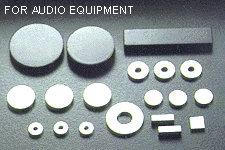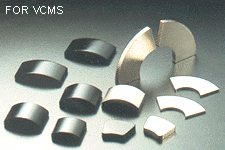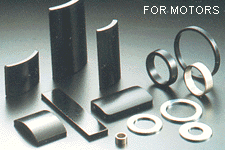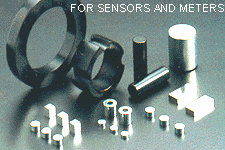|
The development of Neodymium Iron Boron, NdFeB, magnets has opened up a new era of magnetic
design. The sintered NdFeB group of magnets have outstanding magnetic properties, high flux density,
high coercivity, and super high energy products, which allow compact designs or miniaturization of
existing designs. Previously large and heavy components could now be miniaturized by using these
materials, and often resulting in cost savings for the overall assembly.
Neodymium-Iron-Boron magnet is produced by compacting a finely
milled Nd2
Fe14
B alloy powder in the presence of an electromagnetic
alignment field. Magnets produced in the manner are anisotropic,
and will exhibit a preferred direction of orientation when magnetized.
The compacted parts are sintered and heat treated in a controlled
inert gas atmosphere to achieve full density and optimize the magnetic
properties. Final shaping of the magnet is accomplished by grinding
with diamond abrasives.
Systems International supplies a
variety of sintered neodymium magnets with energy products 30 - 48 MGOe,
intrinsic coercive force 12K - 20K Oersteds, working temperature
80 º C - 180 º C (175 º F -350 º F).
The NdFeB magnets we supplied is patent products and licensed by
Sumitomo and General Motors.
Here are some specification sheets
of sintered neodymium magnet.
Note: Materials with energy product as high as 42MGOe are also available,
please contact us directly for new products.
|









